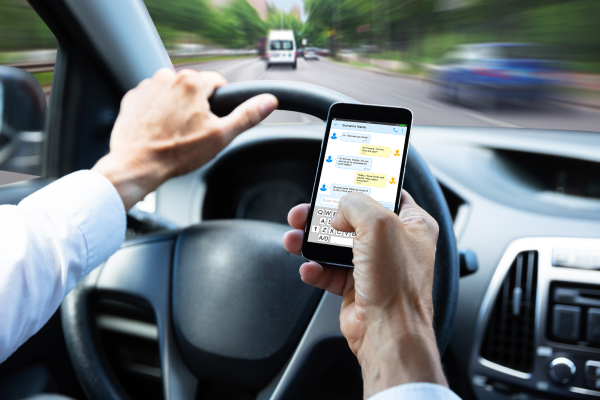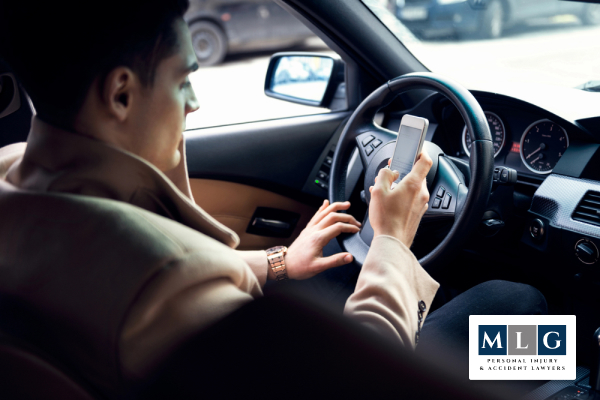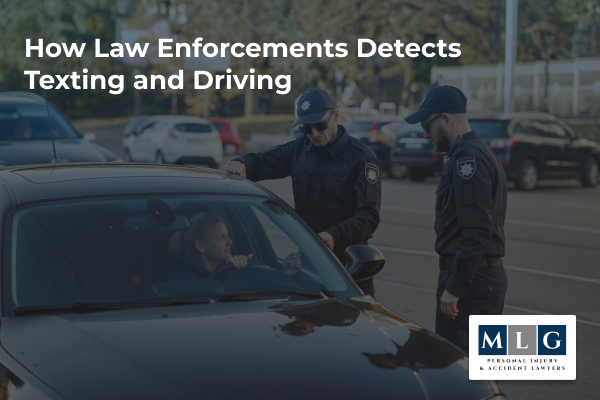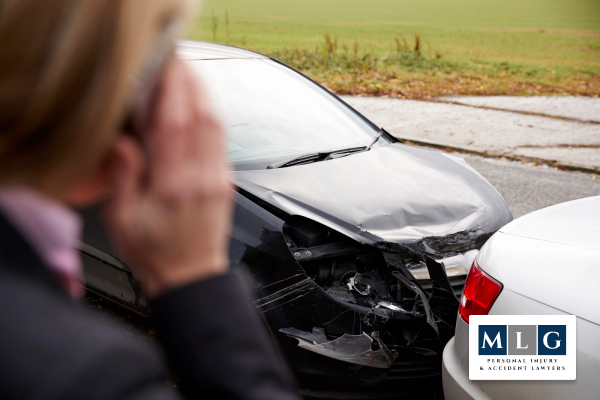
In California, texting while driving is not just frowned upon; it's illegal. The state has strict laws to prevent drivers from using cell phones, emphasizing the importance of road safety. Texting and driving distract drivers, leading to accidents that can cause injuries or even fatalities.
Understanding these laws helps drivers stay compliant and keeps roads safe. At Marcereau Law Group, we fight for those injured in car crashes.
California aims to reduce road accidents through its comprehensive distracted driving laws. These regulations are part of the state's commitment to enhancing traffic safety.
As drivers, knowing what the law expects to avoid penalties and contribute to safer driving environments is important. This knowledge is not just a legal requirement but a moral one, ensuring everyone's safety on the road.
California's texting and driving laws reflect a strong stance against distracted driving. The state updated its legislation to cover drivers' use of any electronic wireless communications device. This includes a handheld wireless telephone.
These laws are part of broader efforts to reduce road accidents and ensure driver attention remains on the road. They apply to everyone driving within the state, whether California residents or visitors.
The laws specifically target the manual use of cell phones while driving. This includes texting, calling without a hands-free device, and using apps. The goal is to keep drivers' hands on the wheel and their focus on driving conditions.
As technology evolves, the laws adapt to include new forms of distraction, like using social media while driving. Even hands-free mode can lead to a distracted driver.

California law prohibits all drivers from using handheld wireless telephones while operating a motor vehicle. This ban includes texting, making calls without a hands-free device, and using apps. The legislation aims to prevent accidents caused by distracted driving, which remains a serious challenge to traffic safety.
According to the California Vehicle Code Section 23123.5, using a cell phone while driving is illegal unless the device is configured for hands-free listening and talking and is used in that manner.
This statute covers various devices. It ensures that drivers cannot bypass the law by using different types of technology. It's designed to be comprehensive. The law covers all potential handheld uses of electronic devices while driving.
Under California's distracted driving laws, drivers cannot operate a cell phone while driving. This includes holding a phone, using any apps, and texting. The law applies to all electronic wireless communications devices, not just cell phones. The aim is to keep the driver's attention fully on the road.
Exceptions to this law include functions that require only a single swipe or tap of the driver's finger. The device must be mounted in a way that does not hinder the view of the road. GPS and music streaming are allowed if operated under these conditions.
However, watching videos or using video calling features while driving remains strictly prohibited These restrictions are vital for maintaining focus and reducing the likelihood of accidents due to distracted driving.
In addition, EMS or some other emergency services agency could be allowed to use a cell phone while driving. Reach out if you have questions about what constitutes an authorized emergency vehicle.
California's penalties for texting and driving discourage this dangerous behavior. For the first offense, the base fine is $20, but with additional penalty assessments, the cost can exceed $150. Subsequent offenses are more costly. They come with increased fines and additional penalties.
The base fine for a first texting violation while driving is $20, but the total can be much higher with court costs and penalty assessments.
For subsequent violations, the base fine increases to $50, but with additional fees, it can total around $250. These penalties are part of the state's efforts to discourage distracted driving and enhance road safety.
California Vehicle Code Section 23123.5 stipulates that each offense also puts a point on the driver's driving record, which can impact insurance rates and driving privileges.
Accumulating points can lead to higher insurance costs and even driver's license suspension. The state takes these violations seriously, aiming to prevent the behaviors that lead to serious road accidents.
When you get cited for texting while driving, you not only receive a fine but also add a point to your driving record. This point can affect your insurance premiums, making it more expensive to get car insurance. Insurers view drivers with points as higher risks and raise their rates accordingly.
Racking up points on your record can lead to more severe consequences, such as license suspension.
California's point system penalizes poor driving behaviors and encourages adherence to traffic laws. Understanding these implications can help drivers make better decisions and avoid activities that lead to points and fines.

Law enforcement agencies leverage various methods to catch drivers who text and drive. Officers look for signs of distracted driving, such as drivers looking down frequently, holding a device, or erratic driving behavior. They may also use technology, and increased surveillance when texting and driving are more likely, such as during rush hours or holidays.
In addition, some police departments use unmarked motor vehicles or officers positioned at vantage points to observe drivers discreetly. These proactive measures deter texting and driving and catch offenders before accidents occur.
Texting and driving can substantially impact liability in car accidents. When a driver causes a crash due to texting, they are typically considered negligent, meaning they failed to exercise reasonable care while driving.
This negligence makes them liable for any resulting damages, including medical expenses, property damage, and pain and suffering. Cell phone use can lead to reckless driving. The cell phone law is sweeping, and each law enforcement agency can and should enforce the law.
In personal injury cases involving texting and driving, evidence of the driver's texting activity can be vital. This evidence may include phone records, witness statements, and testimony from accident reconstruction experts. Demonstrating that the driver was texting during the accident strengthens the victim's case.
Various technological solutions exist to prevent texting and driving, including apps that disable phone functionality while driving, vehicle-integrated systems that block incoming messages, and Bluetooth-enabled devices that allow for hands-free communication.
These technologies help reduce the temptation to text and drive, promote safer driving habits, and reduce the risk of accidents.

If you are hit by a driver who is texting, follow these steps:
At Marcereau Law Group, we represent victims of car crashes caused by texting and driving. Our law office understands the complexities of these cases and works to secure the compensation our clients deserve.

If you've been injured in a car accident caused by texting and driving, don't hesitate. Contact Marcereau Law Group for a free consultation. Our experienced Orange County car accident lawyer will review your case. We provide personalized legal guidance. Schedule your consultation today to get started on the path to justice.
Schedule Your Free Consultation
"*" indicates required fields


"*" indicates required fields